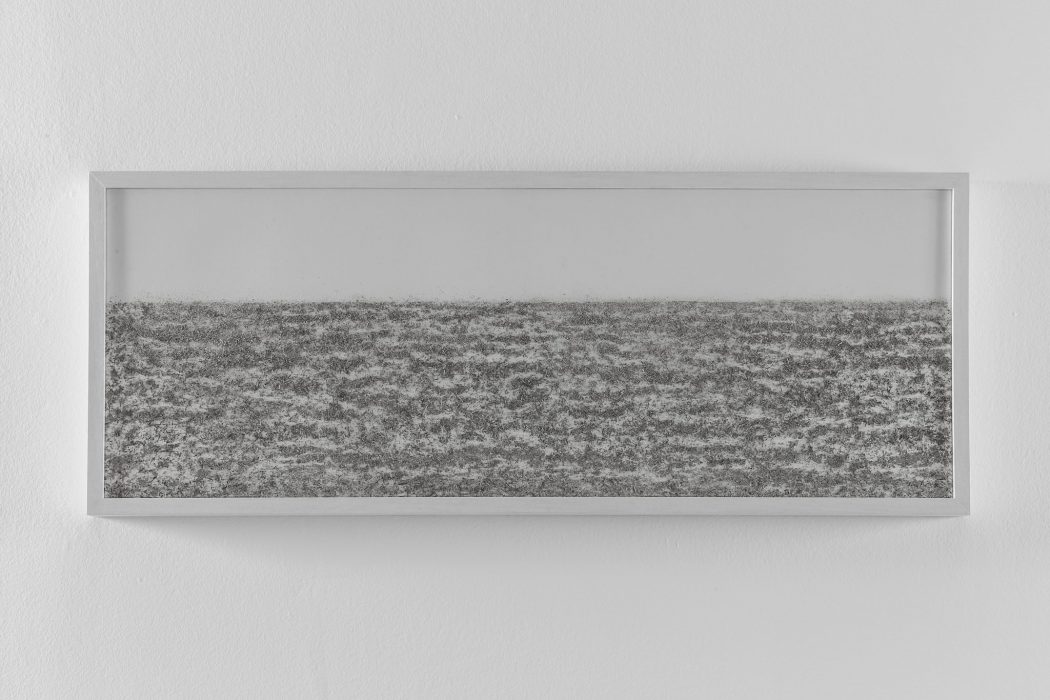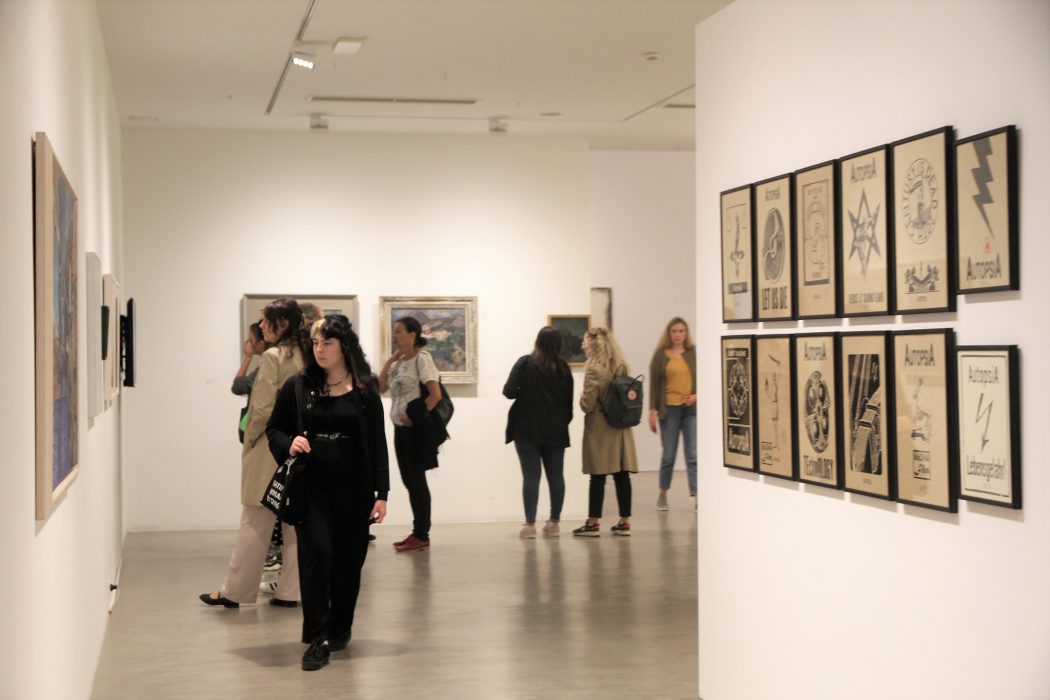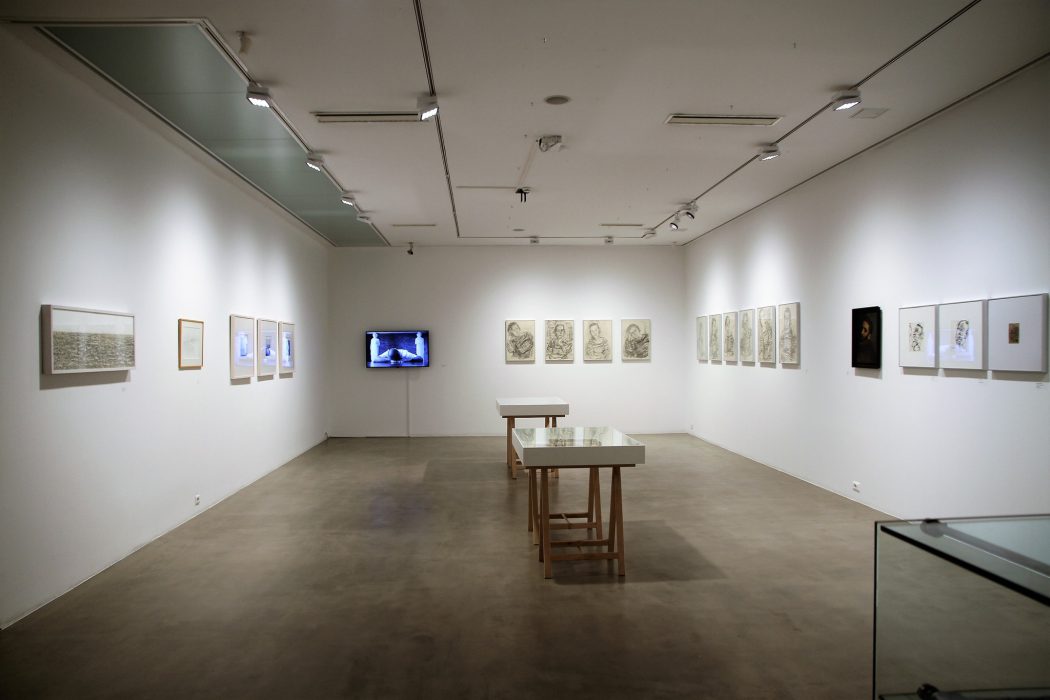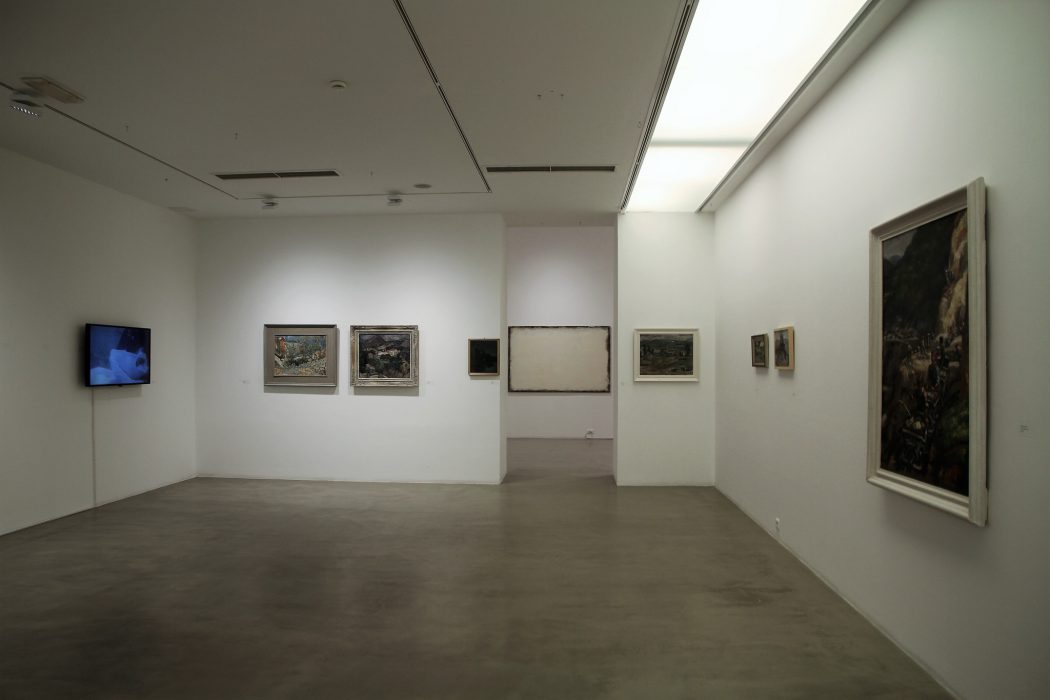The exhibition From the Certain to the Possible: FACES, LANDSCAPES, HYPOCRISIES presents works from the collection of the Museum of Fine Arts in Split created over an extended time period, the themes and visual properties of which group them around the terms highlighted in the title. The intention is to understand, through the landscapes – both natural and urban, as well as their fragments and associative diagrams – the inner moods and mental states conveyed by the artists, and to draw attention, through observations of their own and other people’s faces, to the multifaceted nature of human existence, but also to open that intimate world to the potential neurosis activated by the imposed adaptations and oppressions of collective conventions. These conventions can often become tools of manipulation and conjuring, turning human habitats into toxic and ecologically damaging and unstable territories. We would like to establish, through the selected works from the museum holdings, the co-existence of several different narratives – private and public – with their intersections as potential points of articulation of the highly polemical and current social topics.
Exhibiting artists: Lovro Artuković, AutopsiA, Ljubo Babić, Stjepan Baković, Petar Bibić, Zoe Borelli Vranska, Josip Botteri, Jakov Budeša, Vlaho Bukovac, Eric del Castillo, Vladimir Dodig Trokut, Cata Dujšin – Ribar, Ivo Dulčić, Rino Efendić, Momčilo Golub, Ljubo Ivančić, Petar Jakelić, Dean Jokanović Toumin, Jurica Kezić, Ivan Joko Knežević, Oskar Kokoschka, France Kralj, Maksim Krstulović, Vasko Lipovac, Antun Masle, Celestin Mato Medović, Frano Meneghello Dinčić, Antun Mezdjić, Toni Meštrović, Jerolim Miše, Neznani autor, Ana Opalić, Vjekoslav Parać, Jakov Pavić, Renata Poljak, Viktor Popović, Dunav Rendić, Neli Ružić, Mladen Sasso, Mile Skračić, Sandra Sterle, Frano Šimunović, Marino Tartaglia, Vice Tomasović, Josip Vaništa, Emanuel Vidović, Mila Vod, Vlado Zrnić, Gorki Žuvela.
Author’s note (curator Dalbor Prančević)
I composed this exhibition – of better yet, this exhibition essay – using the works from various collections of the Museum of Fine Arts in Split, created over an extended period of time, the themes and visual properties of which group them around the terms highlighted in the title. My intention is to understand, through the landscapes – both natural and urban, as well as their fragments and associative diagrams – the inner moods and mental states conveyed by the artists, and to draw attention, through observations of their own and other people’s faces, to the multifaceted nature of human existence, but also to open that intimate world to the potential neurosis activated by the imposed adaptations and oppressions of collective conventions. These conventions were often – and still are – used as tools of conjuring and manipulation, turning human habitats into toxic and ecologically damaging and unstable territories, into fields of intolerance and considerable irritability. What I am trying to establish, through the selected works from the museum holdings, is the co-existence of several different narratives – private and public – with their intersections as potential points of articulation of the highly polemical and current social topics. I actually view the Museum holdings – especially the segment of works suspended in museum storage – as a library of tools required to familiarise oneself with, interpret and devise a certain narrative, the coordinate points of which are seemingly plotted by me, but the semantic physiognomy of which is ultimately shaped by the observers themselves.
An artwork has its own life within and beyond this temporarily organised exhibition gathering and can articulate different layers of meaning – release those that are already encoded by the author himself and initiate new ones in an encounter with the neighbouring work or an entire community of them. A work of art should occasionally be wrested from its “certain” historical anchor and displayed in the current domain and fluid context, moving it towards the “possible”. It is an approach that is not foreign to visual studies and the new image science, but also the field of museological reflections, especially on their radical and critical poles of both theory and practice. I am also not losing sight of the viewpoints that perceive works of art as persons and ultimately approach them as such.





